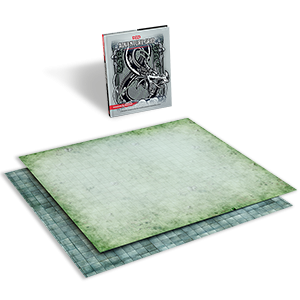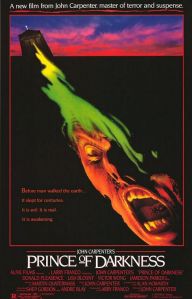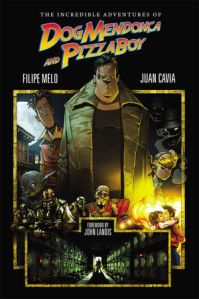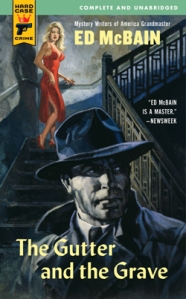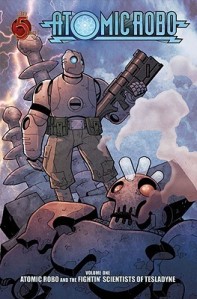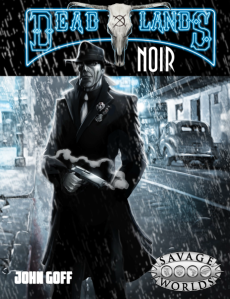
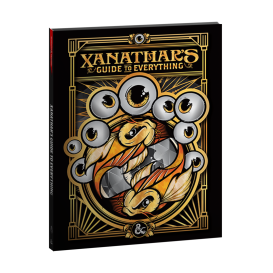
“Xanathar’s Guide to Everything” Core Hobby Store Exclusive Alternative Cover from Wizards of the Coast and Hydro74.
Once again Wizards of the Coast has knocked their latest supplement out of the park! Like their “Volo’s Guide to Monsters,” there is a regular printed hardcover and a limited-edition hardcover which only received one print run. Both are AMAZING, with the regular cover sporting the current incarnation of Xanathar lovingly watching his pet koi. The limited edition alternative cover, however, sports an awesome work of art by Hydro74 with gold on a matte black. This cover pops visually and, in my honest opinion, is done better than the alternative cover of “Volo’s Guide…”.
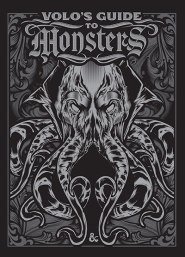
“Volo’s Guide to Monsters” Core Hobby Store Exclusive Alternative Cover from Wizards of the Coast and Hydro74.
With this review I plan on giving a brief glimpse at each chapter, as there is plenty of new information to be had for both players and Dungeon Master’s alike within its 192 pages. Made up of three chapters and an assortment of appendices, the supplement adds both new and revised content from “Unearthed Arcana” as well as pulls some information from “Volo’s Guide…” in order to have everything in one place.
Chapter One: Character Options Galore!!
Do you like a wide selection of subclasses? Well, “Xanathar’s…” has subclasses for your subclasses. I mean, not really…but you get the gist! There’s a whopping 31 subclasses available to add alternatives to your gaming table! Each class gets some love with a wide range of subclasses between first and third level. Along with additional subclasses, each class has some flavor to spice up your roleplay with everything from Barbarian tattoos to Wizard ambitions! Who doesn’t want their Warlock’s binding mark to be a glow-in-the-dark nose or have a get to know your Monk’s master?
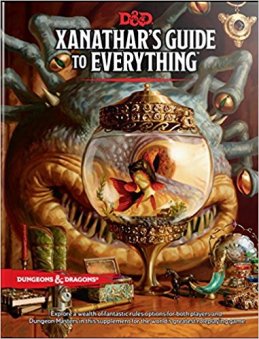
“Xanathar’s Guide to Everything” from Wizards of the Coast.
Are you one of those players that want to have an in-depth background for your character, but you just don’t know where to start? Then chapter one has table after table to get you started. Everything from parents to siblings are covered, as well as major life events and personal decisions your character has had to make. The best part? If you really want to get wild, roll your dice and see what you get! I still remember my Dungeons & Dragons 2nd Edition Advanced days and this was all a part of character generation straight out of the “Player’s Handbook.” The fact that Wizards has included it here makes this chapter a phenomenal resource. Throw in the fact there are a handful of new racial-specific Feats available adds even more flavor during character advancement to help you play a character destined for greatness…or a total party kill…whichever occurs first!
Chapter Two: Masterfully Mastered Information for the Dungeon Master
This chapter address plenty of optional and expanded rules to let the Dungeon Master to make their next gaming session a little spicy! Optional falling rules, expanded rules for sleeping/resting, adamantine weapons…all of this and more can be found here. There is also a closure look at tools character can take, what they consist of and how they can be used. Playing a Bard and want to know a little more of what exactly your Lute can do and how your character’s musical knowledge can be put to effective use? “Xanathar’s…” has you covered. I feel this re-look can bring more to the table as not only a DM, but also the player. Knowing more of what those Tinker’s Tools can do has the ability to add another facet to your characters and NPCs.
Spellcasting is also addressed, specifically area of effects. Examples are given to help clear up any confusion and offers visuals of just what you can do when casting, for example, a spell that utilizes the cone area of effect. These area variations can be brought to the actual table if needed to give players a visual of what all their spellcasters will be able to do and what all will be affected on the map.
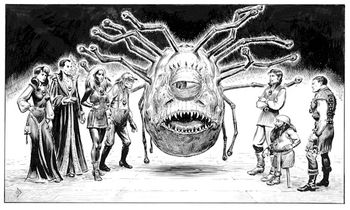 One of the best articles of this chapter is the advice the authors give DMs for encounter building, including traps and encounter tables meant for all types of environments. Even if whatever campaign you’re running is a bit more specific and less generic, with some minor tweaking you’re able to create your own encounter tables easily using the examples provided. This is something much needed for new and budding DMs and this section is great for building up DMs, giving them opportunity to feel comfortable with running games and tackling the struggle of filling in the gaps.
One of the best articles of this chapter is the advice the authors give DMs for encounter building, including traps and encounter tables meant for all types of environments. Even if whatever campaign you’re running is a bit more specific and less generic, with some minor tweaking you’re able to create your own encounter tables easily using the examples provided. This is something much needed for new and budding DMs and this section is great for building up DMs, giving them opportunity to feel comfortable with running games and tackling the struggle of filling in the gaps.
Downtime is also touched upon, expanding a bit on just what players can do. Even if the DM’s players don’t utilize the actual the concept of hourly downtime as the Dungeons and Dragons Adventurers League does, there are ways for it to be integrated into their campaigns for in between adventures to give players a little more scope to their characters.
Lastly, magic items. Lists with item after item from common to legendary to bring to the table as rewards to the players. You can never have too many magical items to choose from, and with a selection like this, there’s plenty of ideas to be had. Whether that’s what to include in your next adventure to using the examples provided as a template to create your own to match the flavor of your campaign.
Chapter Three: Spells, Spells and More Spells!
Just how many spells does “Xanathar’s…” add? I have no idea…I didn’t count, but it’s several. By several, I mean 21 pages worth. Every spellcasting class gets some attention here, with a break down list of what each class would have access to by level. Some are flavorful while others powerful, but either way plenty of them are useful.
Appendices: Because Chapters Just Weren’t Enough
 Here we find two bits of additional content some, if not many, will find useful. Shared campaigns have always intrigued me, and they offer some suggestions on what you should do to make them cohesive and successful. A lot hints at the DDAL-style of play, limited books and magical items, etc. Whether you plan on running your own official DDAL sessions or sit around a table full of rotating DMs there’s information that would make doing so a bit easier all around.
Here we find two bits of additional content some, if not many, will find useful. Shared campaigns have always intrigued me, and they offer some suggestions on what you should do to make them cohesive and successful. A lot hints at the DDAL-style of play, limited books and magical items, etc. Whether you plan on running your own official DDAL sessions or sit around a table full of rotating DMs there’s information that would make doing so a bit easier all around.
Lastly, the book is finished out with name generating tables. Table after table…literally, and all a great resource for players struggling to come up with a character name that tickles their fancy or the DM that get puts on the spot. We have the standard fare, with racial names, etc., but we also have ethnic name tables from all over the world. Our world. Do you want your character or NPC to have a little French flair? Wee wee! German? Ja! Several pages have been dedicated to ethnic names, male and female, as well as family names. It’s a one stop shop, so to speak, for the naming impaired. Not everyone’s character can be as cool as “Toad, Trollbold Fire Priest of Kossuth,” after all.
Overall, this book is worth the $49.95 price point. It’s a resource that benefits gamers, no matter which side of the DM Screen you sit. There’s more substance to chew on here than in “Volo’s Guide…” and doesn’t disappoint.
Two hearty Gnomish thumbs up with a big toe thrown in for good measure!
